Incredible ’22 FUN Auction, Part 2: Bust $10 Gold Coins
Background information regarding the official auction of the Winter FUN Convention in January 2022 was provided in part 1 of this series. The topic here is prices realized for bust eagles (U.S. $10 gold coins) in the FUN auction, with emphasis upon market realities. Three of these were leaders in the sale and are especially newsworthy.
Background information regarding the official auction of the Winter FUN Convention in January 2022 was provided in part 1 of this series. The topic here is prices realized for bust eagles (U.S. $10 gold coins) in the FUN auction, with emphasis upon market realities. Three of these were leaders in the sale and are especially newsworthy.
The $3.36 million result for the finest known 1795 Nine Leaves variety eagle was certainly startling. The same coin realized $1,057,500 on Sept. 30, 2015 in the Pogue II sale by Stack’s-Bowers, with the cooperation of Sotheby’s, in New York.
This Pogue-Simpson 1795 Nine Leaves eagle was PCGS graded MS63 + and CAC approved. It is the highest certified by PCGS. The NGC census does not list a 1796 Nine Leaves eagle as grading higher than MS61.
Experts at CAC ignore the plus aspect of plus grades assigned by PCGS and NGC. It is thus CAC approved as a MS63 grade coin, and experts at CAC are not revealing whether they found its grade to be in the high end of the 63 range. In addition to being the only mint state 1795 ‘Nine Leaves’ $10 that has been CAC approved, this coin is the only 1795 ‘Nine Leaves’ ten that has been CAC approved in any grade.
Not all 1795 Nine Leaves eagles have been submitted to CAC. The Magnolia Collection 1795 Nine Leaves eagle was undergraded in my opinion by PCGS as MS61, probably never submitted to CAC, and then stolen in 2011 while in transit to a collector.
PCGS reports two others as having been graded MS63 without a plus. One of them was owned by Anthony Taraszka, and was auctioned by Stack’s-Bowers on Aug. 15, 2019, at that year’s ANA Convention, for $630,000. In my personal opinion, the Pogue-Simpson Nine Leaves eagle is of much higher quality than the Taraszka coin. The difference between the two is far greater than the respective PCGS grades of 63+ and 63 might suggest.
Should the Pogue-Simpson 1795 Nine Leaves ten be worth multiples of the value of the Taraszka coin? In 2019, a cataloguer for Stack’s-Bowers may have implied that the 1795 Nine Leaves eagle in the Harry Bass Core Collection, which is uncertified, might merit a grade of MS64, “Choice Mint State,” and it is listed in the corresponding SBG catalogue as being number one in the condition ranking. While this Bass Collection coin is currently impounded in a museum, it might not be so forever.
The same SBG catalogue in 2019 indicated that the other PCGS graded MS63 Nine Leaves ten, not the Taraszka coin, was earlier PCGS graded MS61 and was last auctioned in March 2001. Many rare U.S. coins have been upgraded since 2001. Additionally, there are other relatively high grade 1795 Nine Leaves eagles around, and probably at least nineteen survive in all grades, perhaps as many as twenty-three. Nonetheless, there are more than one hundred and forty 1794 silver dollars extant, and two of those have each recently sold for multiples of the price realized of the Pogue-Simpson 1795 Nine Leaves eagle.
The other bust eagles in the Winter FUN ’22 auction were not as rare or as famous. Did they fare well?
Apparently, the NGC graded MS63 1799 Small Obverse Stars Eagle in this sale was in the exact same holder when it was auctioned by Heritage for $44,650 on January 7, 2015, in another FUN event. On Jan. 14, 2022, it realized $48,000, not much more than it realized in 2015.
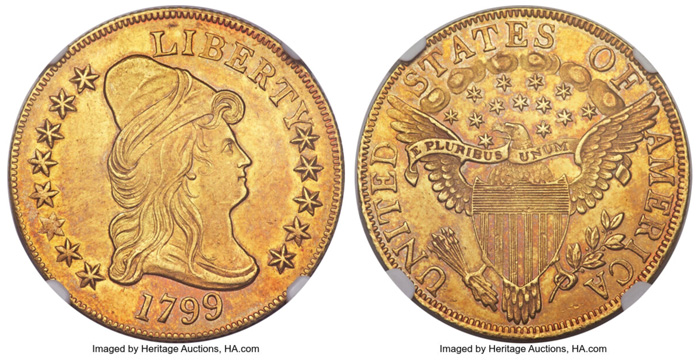
The hyper-rally for rare gold business strikes during 2021 was not all
encompassing. Evidence that I have analyzed thus far suggests that the main
components of the rally were scarce U.S. gold coins that are among the
finest known of their respective dates AND of relatively
high quality for their respective design types overall. Interest in
assembling type sets has increased, though only one coin of each design
type is required for a type set. Many rare and/or early U.S. gold coins did
not increase in value during 2021 by much if at all.
Even if a rare gold coin is worth the same in January 2022 as it was worth in January 2015, it may still have increased in value to a substantial extent. Most rare or scarce U.S. gold coins fell in value from the middle of 2015 to 2019 or so, and some of these increased in value during late 2020 and/or 2021.
There is a need to reflect upon a range of coins of each design type in order to attain an understanding of market trends overall. As for the NGC graded AU58 1799 Large Obverse Stars eagle in this auction, the consignor should be happy that it brought $22,800. It is unclear as to whether this coin increased in value during 2021; it probably did to a mild extent.
There were two NGC graded AU58 Small Obverse Stars 1799 eagles in the FUN auction. They brought $17,400 and $19,200, respectively, moderate to strong prices. In terms of quality and rarity, these are not premier examples of early gold coins. They are not among the finest known Small Obverse Stars 1799 eagles. They were not leaders in the market rally of 2021. Also, neither the Small Obverse Stars 1799 $10 nor the Large Obverse Stars 1799 $10 is very rare.
It is curious that a 1799 Small Obverse Stars ten in a PCGS “UNC Details” holder brought $16,800. Depending upon the magnitude and severity of the drawbacks of a non-gradable coin, it is not unusual for one with “Uncirculated Details” to realize an XF40 level price, though this one realized slightly more than the CPG retail price estimate for an AU50 grade 1799 eagle.
I maintain that the values of XF40 to AU50 grade bust eagles of the least scarce dates have increased during the last three years, and such increases have not been entirely reported in price guides. It is not necessary to know the motives of the bidders for this specific coin to know that $16,800 would be a fair retail price for an XF40 grade 1799 ten or for a half decent 1799 ten in a PCGS “UNC Details” holder. If a dealer bought this non-gradable coin, however, it could be possible that he is seeking to modify this 1799 eagle so that it has a chance of receiving a numerical grade from PCGS in the future.
A PCGS graded AU58 1800 eagle brought $28,800. The CPG retail price estimate for this coin is or was $22,800. The 1800 is clearly rare in all grades, though probably not very rare. I estimate that around 330 are known, including quite a few that are non-gradable.
Certainly, it is plausible that this PCGS graded AU58 1800 eagle increased in value by more than 15% in 2021, though it is more likely that most of an increase in value occurred from 2018 to 2020. No one auction result demonstrates that a coin has increased in value; much data and knowledge of pertinent coin markets are required for a sound analysis.
A PCGS graded MS63 1801 ten realized $66,000. Either this was a very strong price, around 20% above a medium retail level, or the medium retail level increased recently and this result is in the middle of the corresponding, new retail price range. My research suggests that PCGS graded MS63 1801 tens increased in value years ago, though may have risen a little more in 2021.
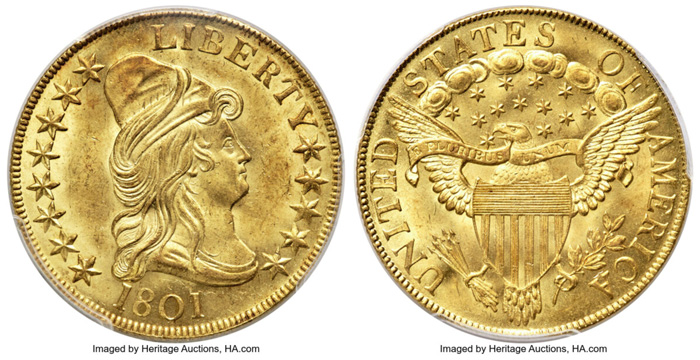
The 1801 is one of the least scarce early eagles and there are many that
are certified as MS63. The CAC approved, PCGS graded MS64+
, Stickney-Pogue-Simpson 1801 eagle, however, is among the most famous of
all early tens.
This 1801 was sold by David Akers to Brent Pogue’s father more than thirty years ago. The Stickney-Pogue-Simpson 1801 eagle has no noticeable friction. The luster is a little subdued, though I like it. There are small contact marks here and there, and a small number of hairlines. Small contact marks or short hairlines tend to be more noticeable when a substantial quantity of them are bunched together. On this coin, there are no such bunches, and the total number of imperfections is not large. This is an especially attractive coin.
In my view, the grade of the Stickney-Pogue-Simpson 1801 is very close to the MS65 border, a point which may possibly have contributed to the extremely strong price realized on Jan. 13, 2022, $432,000! If this 1801 ten had been upgraded to MS65 in 2020 or 2021, I would not have been surprised, though I am not suggesting that it should upgrade.
Although PCGS and NGC have graded 1801 eagles as MS65, CAC has not approved an 1801 eagle as grading MS65 or higher. Furthermore, this is the only 1801 ten that is PCGS graded MS64+. On Sept. 30, 2015, in the Pogue II sale, Stack’s-Bowers auctioned this same coin for $188,000. In my estimation, the respective wholesale-retail border for this coin was around $138,000 on Sept. 30, 2015 and around $168,000 on Jan. 13, 2021.
The $188,000 result was very strong in September 2015. On January 13, 2021, the PCGS price guide value for a “64+” 1801 was $200,000. The CPG-CAC estimate of a medium retail price was $210,000, which I regarded as extremely accurate. In my view before the auction, the combination of CAC approval and the fact that this coin’s grade really is extremely close to the MS65 range indicated that a $260,000 result would have been very strong and very understandable.
CAC reports eight other PCGS or NGC graded MS64 1801 tens as being ‘solid,’ thus grading in the middle or high end of the MS64 range in accordance with CAC standards. Even if this listing of eight refers to just six or seven different CAC approved 1801 eagles in the MS64 range, it is likely that one of those will become available in the near future. Although I very much like the Stickney-Pogue-Simpson 1801, I really am astonished by the $432,000 result. This was one of the strongest prices in the whole FUN auction.
While the 1801 is not rare, the 1804 eagle is clearly rare. In all grades, including those that are non-gradable, there are probably fewer than one hundred in existence, certainly fewer than one hundred and twenty-five, maybe just eighty-five.
The Pogue-Simpson 1804 eagle was PCGS graded MS-63+ in 2014 or early 2015, I believe. Its certified grade has not changed since 2015.

On Sept. 30, 2015, the Pogue-Simpson 1804 eagle realized $440,625, an
extremely strong price at the time. It is true that 1804 eagles are ultra
rarities in mint state grades. PCGS reports two as MS62, zero as MS63, this
coin as MS63+ and one as MS64. The NGC census includes
five as MS62, four as MS63 and one as MS64. These numbers include multiple
counts of some of the same coins. CAC has approved just one mint state 1804
eagle, which is not the Pogue-Simpson coin.
The CAC approved MS64 1804 eagle was PCGS graded MS63 (not 64), and in a holder from the 1990s with an ‘old green label,’ when it was auctioned by Heritage for just $176,250 in April 2013. It is puzzling that the presently discussed Pogue coin realized $440,625 in September 2015. Market levels for rare gold coins were a little higher in April 2013 than they were in September 2015.
After that 1804 eagle was upgraded to MS64 by PCGS and CAC approved again, it did not sell in an auction in 2016. No one would then commit to paying as much as $446,500. Markets for rare coins were not booming in August 2016.
Certainly, market levels for rare gold coins were much higher in the middle of January 2022 than they were in 2016. Before the Simpson session on Jan. 13, I figured that a medium collector price would have been $350,000, a very strong price would have been $410,000, and $500,000 would have been an extremely strong price for the Pogue-Simpson 1804 eagle.
The $432,000 result was in the very strong range. Moreover, it is odd that the Pogue- Simpson 1804 brought the same amount as the Pogue-Simpson 1801, $432,000. On Sept. 30, 2015, the Pogue-Simpson 1804 brought $440,625, more than it brought on January 13, 2022, while the Pogue-Simpson 1801 brought $188,000, less than half as much as it brought in January 2022.
Although it is true that the Pogue-Simpson 1804 has some negative technical aspects, as early U.S. gold coins tend to have, the overall eye appeal of the coin is exceptional for a Bust $10, especially for an 1804. The cool mellow green color is pleasing. On the obverse, the contrast between some beige devices and medium green fields is appealing. On the reverse, the russet tints on the shield and in the reverse outer fields are attractive.
The already mentioned, lone CAC approved mint state 1804 ten is currently in the Hansen Collection, and might not be available for a long time. Several participants in the January 2022 FUN auction were eager to compete for the rare bust eagles that were available.
The results for the 1795 Nine Leaves ten and the $432,000 1801 ten overshadowed the prices realized for all the other bust tens, which were moderate to very strong, mildly strong on average. The extent to which market levels for bust eagles rose from late 2020 to early 2022 remains to be determined, certainly values of some coins increased dramatically more than the values of most other bust eagles.

Download the Greysheet app for access to pricing, news, events and your subscriptions.
Subscribe Now.

Subscribe to The Greysheet for the industry's most respected pricing and to read more articles just like this.
Subscribe Now.

Subscribe to CPG® Coin & Currency Market Review for the industry's most respected pricing and to read more articles just like this.
Subscribe Now.

Subscribe to CAC Rare Coin Market Review for the industry's most respected pricing and to read more articles just like this.
Source: Greg Reynolds


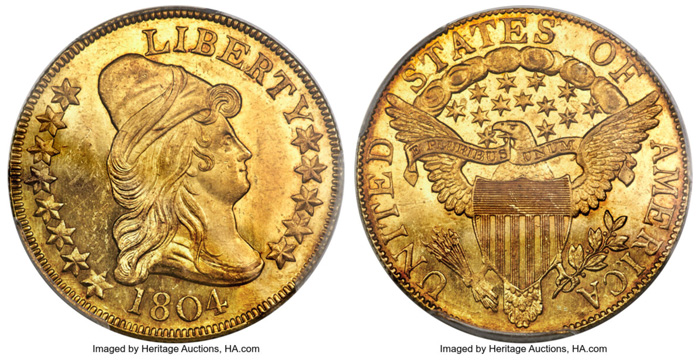






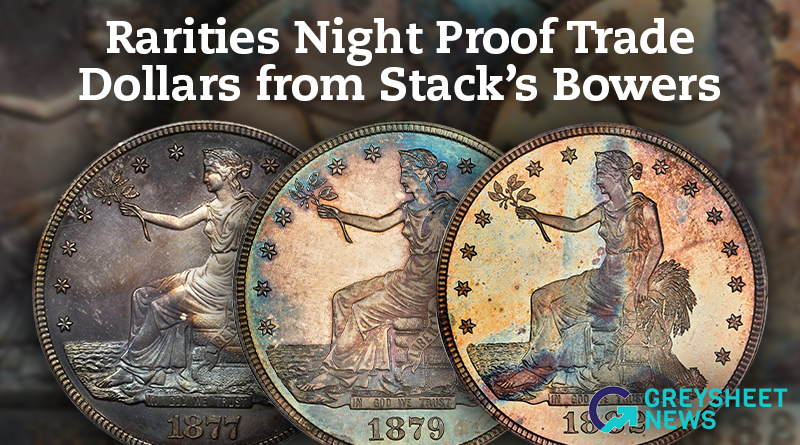
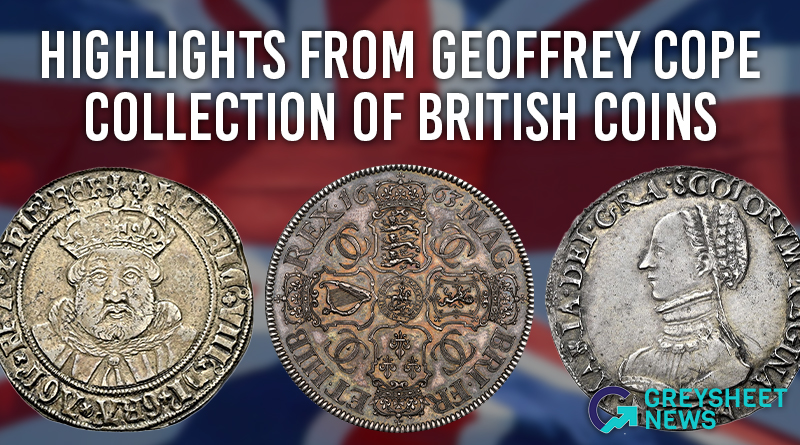
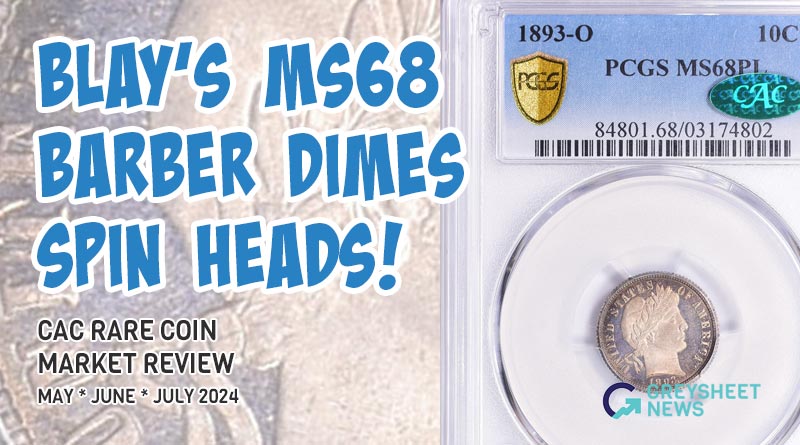
Please sign in or register to leave a comment.
Your identity will be restricted to first name/last initial, or a user ID you create.
Comment
Comments